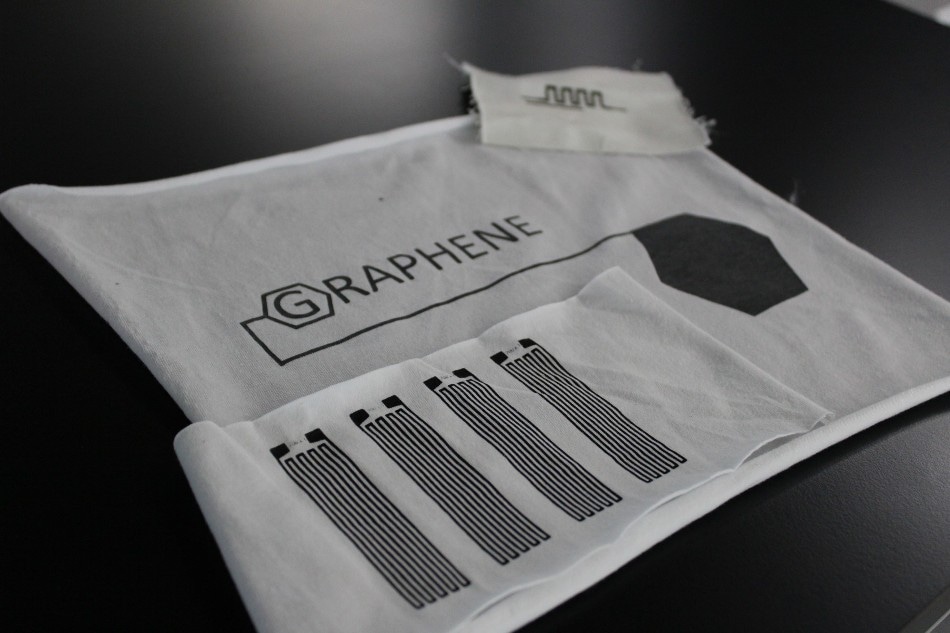Aug 14 2017
The use of graphene in printed electronic devices has been the reason for rapid advancement in the field of wearable technology.
 Credit: The University of Manchester
Credit: The University of Manchester
In a recent study by Researchers at The University of Manchester, flexible battery-like devices have been directly printed on to textiles by means of a simple screen-printing method.
The obstacle in realizing wearable technology at present is the way to power up devices without using complex battery packs. This can be overcome by using devices called as supercapacitors, which while functioning similar to a battery also enable swift charging for completely charging devices within a few seconds.
At present, Researchers have developed a solid-state flexible supercapacitor device by printing on cotton fabric by means of conductive graphene-oxide ink. The printed electrodes were observed to have exceptional mechanical stability as a result of the strong interaction between the textile substrate and the ink, which has been described in the 2D Materials.
The extensive potential of wearable technology can be tapped by further advancing the graphene-oxide printed supercapacitors. Further investigation and advancement can help realize applications such as high-performance sportswear for monitoring performance, lightweight military gear, innovative types of mobile communication devices, embedded health-monitoring devices and also wearable computers.
If the new class of wearable devices has to be powered up, the energy storage system should possess a fair amount of mechanical flexibility along with long cycling life, better operational safety, high power and energy density and lower cost.
The development of graphene-based flexible textile supercapacitor using a simple and scalable printing technique is a significant step towards realizing multifunctional next generation wearable e-textiles. It will open up possibilities of making an environmental friendly and cost-effective smart e-textile that can store energy and monitor human activity and physiological condition at the same time.
Dr Nazmul Karim, Co-author and Knowledge Exchange Fellow, the National Graphene Institute
Graphene oxide is one form of graphene that can be synthesized as an ink-like solution in a comparatively inexpensive way. Upon being applied to textiles, the solution can produce supercapacitors which are an intrinsic part of the fabric.
Textiles are some of the most flexible substrates, and for the first time, we printed a stable device that can store energy and be as flexible as cotton. The device is also washable, which makes it practically possible to use it for the future smart clothes. We believe this work will open the door for printing other types of devices on textile using 2D materials inks.
Dr Amor Abdelkader, another Co-author
At present, The University of Manchester has neared the completion of constructing its second principal graphene facility in addition to the National Graphene Institute (NGI). Anticipated to be commissioned by the year 2018, the £60m Graphene Engineering Innovation Centre (GEIC) will function as an international research and technology facility.
The GEIC will enable the United Kingdom to play a major role in advancing the application of graphene and associated two-dimensional materials. The GEIC will principally be industry-pioneered and will concentrate on pilot manufacture and characterization.
How flexible is graphene?